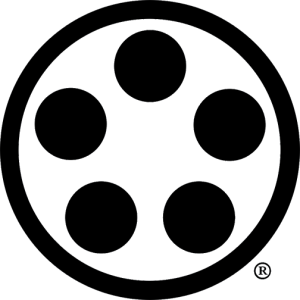Swords and Shoes: A Good Polish Is Important
In feudal Japan 300 years ago, bujutsu was a part of the education of every samurai. Each clan had its dôjô and each samurai, according to his rank, received at least a minimal amount of martial training. Commoners were specifically denied this training and, because they saw bujutsu as something which was only practiced by the upper class, they soon came to view bujutsu as being, intrinsically, an upper class thing.
During the Meiji Restoration, however, this was to change. As thousands of samurai were suddenly out of work, many of them were forced to open the doors of their schools to commoners. Such famous swordsmen as Sakakibara Kenkichi even went on tour, demonstrating martial arts techniques, in an effort to promote the study of bujutsu. This was a radical departure from the old ways, as only a few years previously commoners weren't even allowed to watch classes, much less take part.
As was the case a hundred years earlier, training was still segregated. But now, instead of by rank, it was by financial status. Those who could afford it opted for the more expensive and esoteric arts such as yabusame or iaijutsu; the poorer student was forced to pick an art with little start up costs, such as jûjutsu.
This led to a segregation by art instead of by social caste, as had been the case during the Bakufu. Now a person who studied an art such as swordsmanship was seen as inherently superior to a person who studied jûjutsu. This represented a fundamental shift in thought as, prior to the Meiji period, jûjutsu was a part of every warrior's training.
The results were predictable: With more and more people from the lower social classes joining jûjutsu schools, fewer and fewer members of the upper classes wanted to have anything to do with the art. The fact that the low-class students tended to get into bar fights with great regularity did little to improve the situation. In fact, by the 1880's it was common knowledge that many jûjutsu instructors made more money repairing townsmen's dislocated shoulders on Saturday morning than they did by teaching their students how to dislocate a shoulder on Friday night.
This public degradation of a traditional art is something from which jûjutsu never really recovered. True, the work of Kanô Jigorô helped somewhat, but a student of iaidô still receives more respect in Japan than one of jûdô. The legacy of being an art that was practiced by drunken street-fighters is something which jûdô may never recover from: Somehow, it is still seen as something which is not a part of the court of a gentleman.
And then came the American occupation of Japan and Okinawa after World War II. Suddenly, hundreds of servicemen were learning karate. When they returned home they were in much the same situation as the 19th century samurai: they had an art which they truly loved, but the only way to get students was to open the doors to anyone. And again, like jûjutsu, karate gained overtones of something that was practiced only by the lower classes. The standard story of its use by Okinawan farmers to defend themselves against rampaging samurai did nothing to enhance this reputation: it's very hard to interest a college professor or a bank president in something that a farmer does.
During the Tokugawa era the samurai were the ruling caste, and they acted like it. Aside from removing the head of an occasional merchant who failed to show the proper respect, they took great pains to look the part. The swords were polished, the hair was neatly groomed, and the kimono was the best grade of silk a person could afford. Due to this desire to maintain the image of excellence, a promotion could be a financial disaster. A samurai was forced to purchase an entirely new wardrobe, and all the accessories, in order to fit the required image for his new job.
The important point of all this is that, traditionally, a martial art was seen as part of a larger picture. A person was first a samurai, and then a member of a ryû. The teaching of his chosen bujutsu were seen as something which enhanced and preserved his samurai status. They were a part of his life and not, as is often the case today, a recreational activity to be practiced two or three evenings a week and then forgotten.
Which brings us to today. When a member of the general public sees a person walk into a dôjô, and the student is poorly groomed and poorly dressed, it places a label on the school, the art, and the martial arts in general, which says that "This is an art which is practiced by members of the lower social classes, and it is not something which a lady or gentleman would want to have anything to do with".
Do we really need the participation of members of the upper classes in budô? Yes. Emphatically yes. The activities of the upper classes are maintained through the ages more than those of the lower classes, whose pastimes tend to reflect the latest fads and affectations. The opera and polo have been around for hundreds of years, but where are the hula-hoops and drive-in movies? It's quite simple: in order for any event to become a part of the social fabric, it must be accepted and practiced by the upper strata of a society.
If you believe that budô is really a thing which should become a part of one's life, you must step back and take a long and objective look at the image you project. The simple truth is that people who wear jeans and baseball caps work for people who don't, and its not a bit different than 17th century Japan where the people who wore silk kimono were in charge of the people who didn't. Yes, I know that the majority of people walk around saying things like this is a free country and everyone is equal. If you believe that, you're very naive.
We need to establish budô as something that is an above-average event to be practiced by above-average people. If we don't, we can't use a dôjô to improve people, we can only lower the standards of the dôjô to that of the general population.
The End


